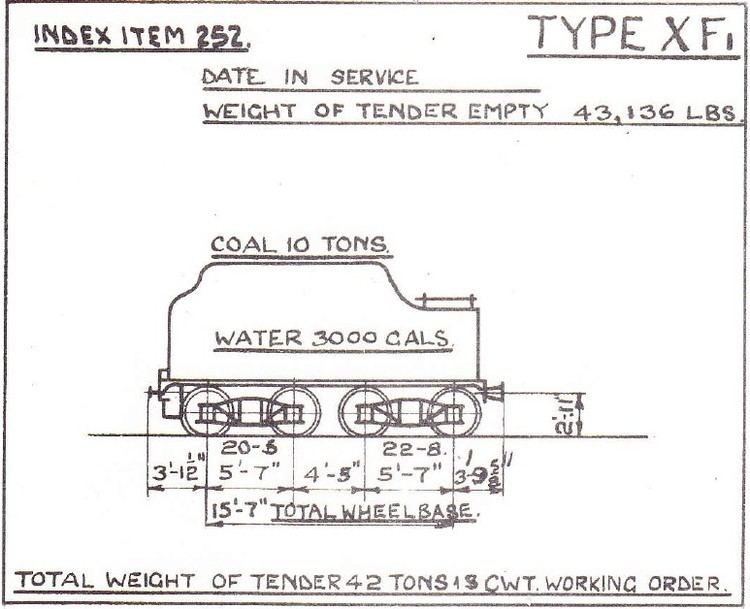Designer South African Railways In service c. 1925 | Builder South African Railways Configuration 2-axle bogies | |
 | ||
Gauge 3 ft 6 in (1,067 mm) Cape gauge Length 22 ft 6 ⁄8 in (6,861 mm) | ||
The South African type XF1 tender was a steam locomotive tender.
Contents
Ten Type XF1 tenders were built as spare tenders by the South African Railways during the 1920s. They were apparently not allocated to or built for any particular class of locomotive, but were suitable for use with a wide variety of serving engines.
Manufacturers
During the 1920s, ten Type XF1 tenders were built as spare tenders by the South African Railways (SAR).
Characteristics
These tenders had a modern appearance, with flush sides all the way to the top of the coal bunker. They were very similar in appearance to those Type XF tenders which had been rebuilt by the SAR by mounting a completely new upper structure on the existing underframes. They had the same water capacity of 3,000 imperial gallons (13,600 litres) and coal capacity of 10 long tons (10.2 tonnes) as the Type XF, but rode on diamond frame bogies with a 12 inches (305 millimetres) longer wheelbase per bogie.
Locomotives
Tenders were usually numbered for the engines they were delivered with. The ten Type XF1 tenders were built as spare tenders, suitable for use with a wide variety of serving engines, and were therefore not numbered for specific engines but in the tender number range from N37 to N46. The "N" number prefixes usually indicated non-revenue earning vehicles.
Classification letters
Since many tender types are interchangeable between different locomotive classes and types, a tender classification system was adopted by the SAR. The first letter of the tender type indicates the classes of engines to which it can be coupled. The "X_" tenders could be used with the following locomotive classes:
The second letter indicates the tender's water capacity. The "_F" tenders had a capacity of 3,000 imperial gallons (13,600 litres; 3,600 US gallons).
A number, when added after the letter code, indicates differences between similar tender types, such as function, wheelbase or coal bunker capacity.
